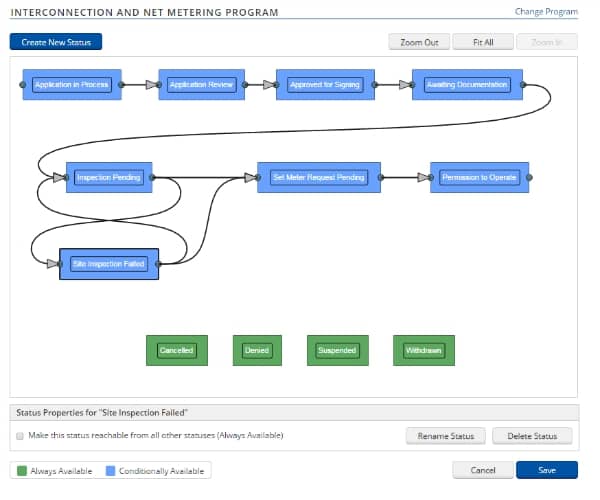 Kirkland, Wash.-based solar project applications developer Clean Power Research says its PowerClerk Interconnect software has processed more than 25,000 interconnection applications for five utilities.
Kirkland, Wash.-based solar project applications developer Clean Power Research says its PowerClerk Interconnect software has processed more than 25,000 interconnection applications for five utilities.
The utilities, which include Southern California Edison (SCE) and NV Energy, are able to build interconnection application processes that support a variety of programs, rate structures and incentives, such as community solar, feed-in tariffs, energy efficiency and tax credits. The system also supports cleantech technologies, such as energy-efficiency devices, building improvements and energy storage.
According to Clean Power Research, the average time for program rollout on PowerClerk Interconnect has been three months, with some utilities implementing in less than a month.
NV Energy, the first utility to implement PowerClerk for interconnection, reports that it has reduced the average time to interconnection by 63%. SCE combined two interconnection application processes – for small and large system net energy metering – into a single online process using PowerClerk. With the new application, SCE interconnection applicants are guided through the process, with relevant documentation and agreements automatically selected based on the user inputs.
By the end of the year, Clean Power Research expects to launch an additional five interconnection programs in PowerClerk, including two major solar municipal utilities.
In addition, the Massachusetts Clean Energy Center is using PowerClerk to support its Solarize Mass and Mass Solar Connect programs that focus on providing competitive pricing for homeowners, businesses and nonprofits.
‘Our PowerClerk customers tell us that taking solar interconnection application processing online has enabled world-class improvements in their processes,’ says Jeff Ressler, president of software services at Clean Power Research. ‘The quality of applications has dramatically improved, cycle times have been cut in half or better, and real-time information is now available to everyone across the organization, enabling levels of collaboration that weren't possible before.’

